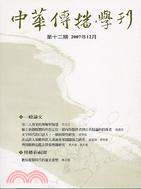 閱覽人數: 787
閱覽人數: 787
December
2007
No. 12
頁數:165 - 211
作者(中)
唐大崙、張文瑜
作者(英)
Da-lun Tang & Wen-Yu Chang
關鍵詞(中)
眼動追蹤 ; 傳播研究 ; 心理學 ; 認知歷程
關鍵詞(英)
eye-tracking ; communication research ; psychology ; cognitive processes
中文摘要
眼動追蹤技術在心理學領域的研究中沿用已久,它不只為一種探索心理歷程的工具,也逐漸在其他領域開創出新的應用議題,但是對傳播研究者而言,仍屬新穎且複雜度較高的方法。雖然在心理學與其他應用領域,已經有研究者提出相深刻的文獻回顧,卻幾乎沒有人將討論焦點集中在與傳播研究議題相關之方法上的意義。因此本文目的即企圖從過去眼動追蹤實驗方法的特色出發,點出四個與傳播研究相關的重要意涵,分別是:(l)變項的獨特性意涵,(2)歷程勝於結果的意涵,(3)自然客觀之資料型態的意涵,以及(4)符號、解釋意義和主體之間互動性的意涵,來探索傳播行為研究如何運用眼動追蹤技術,增進對媒體內容與接收訊息者的瞭解。同時,對於眼動追蹤原理與發展、眼球運動變項的獨特性與傳播研究之關聯、眼動追蹤法輔助著重認知歷程的傳播研究,與目前眼動追蹤法面臨的最大困境,一一論述,期盼能啟發未來的傳播研究方向。
英文摘要
Eye-tracking method, which is extensively used for exploring the cognitive process in physiology, psychology, and linguistics, remains a rather unfamiliar approach to most communication researchers. This paper attempts to examine the literature of eye-tracking methodology and to discuss how the method can be used for communication research, with special attention to the study of message content, receiver and kinesics. Four implications of eye-tracking method in communication study are pinpointed and its limitations are discussed.